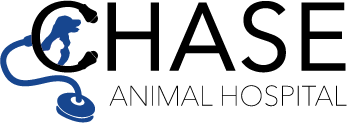Pet Health Articles
-
Cyclosporine ophthalmic ointment is an immunosuppressant used in the treatment of eye diseases suspected to be immune-related, including keratoconjunctivitis sicca (KCS) and other inflammatory conditions of the eye. Cyclosporine comes as an ophthalmic ointment but may sometimes be compounded into a higher concentration ophthalmic solution for pets not responding to the ointment. It is important to remember that it may take days to weeks to notice improvement. Do not stop giving the medication without asking your veterinarian. If signs of serious side effects or immune suppression occur, contact your veterinarian immediately.
-
Cyclosporine is given by mouth and is used to treat atopic dermatitis in dogs and cats. It has also been used off-label to treat other types of immune-mediated conditions. Give as directed. The most common side effects include stomach upset, such as vomiting, diarrhea, and decreased appetite. Do not use in pets with severe infections, a history of cancer, allergies to the medication, that are nursing or pregnant, or in pets younger than six months old. If a negative reaction occurs, contact your veterinarian.
-
Cyproheptadine is given by mouth and is used off label to treat allergic skin conditions, certain toxicities, and to stimulate appetite. Give as directed by your veterinarian. Common side effects include sleepiness, increased appetite, and dry mouth. Do not use in pets that are allergic to it or pets undergoing skin allergy testing within the next two weeks. If a negative reaction occurs, please call your veterinary office.
-
Cystine bladder stones appear to be the result of a genetic abnormality that prevents a dog from reabsorbing cystine from the kidneys. While bladder stones in general are somewhat common in dogs, cystine bladder stones are rare. Your veterinarian may be able to palpate the stones or may need to perform imaging studies such as a bladder ultrasound or a contrast radiographic study. There are two primary treatment strategies for treating cystine bladder stones in dogs: dietary therapy to dissolve the stones, or physical removal of the stones. Cystine stones have a high rate of recurrence, despite careful attention to diet and lifestyle.
-
Cystitis means inflammation of the bladder. The most common cause of cystitis in dogs is bacterial infection. Other common causes include bladder stones, tumors or polyps in the bladder, and abnormal anatomy. The most common clinical sign is blood in the urine (hematuria). The first group of tests performed includes urinalysis, urine culture, and bladder palpation. Further diagnostics may include bladder radiographs, ultrasound, and contrast X-rays. Blood tests to look for systemic problems are also sometimes required. Treatment is based on the cause.
-
Cysts are hollow spaces within tissues that contain either a liquid or a solidified material. Some breeds have a tendency to develop certain types of cysts. Accurate diagnosis relies upon microscopic examination of a piece of tissue. The most common treatment for cysts is surgical removal. It is important to prevent your pet from rubbing, scratching, or otherwise bothering the cysts or the surgical site.
-
Cytarabine is a chemotherapy medication commonly used off label to treat blood cancers and brain inflammation. It is an injectable solution usually given in the vein by a veterinary professional. Common side effects include gastrointestinal upset and low blood cell counts. This medication should not be used or used with caution in pets with liver or kidney disease, those that have an allergy to this medication, and pregnant/lactating pets. If a negative reaction occurs, call your veterinary office.
-
Cytology is a useful tool to often diagnose abnormal lumps on your pet's body as well as evaluation of fluid samples and tissue surfaces. It is relatively simple and inexpensive but can provide a lot of information. Depending on results, further tests may be indicated to best help your pet.
-
Cytology is the microscopic examination of cells that have been collected from the body. Lesions on the surface of the skin or from moist body cavities can be sampled very simply by scraping, swabbing, flushing, or making impressions of the tissue. The collected cells get looked at under a microscope and in many cases a diagnosis can be made to determine the best form of treatment.
-
Collecting tissue samples for cytology or histopathology allow a pathologist to often give a diagnosis of the type of mass or tumor your pet has. Samples can be obtained by fine needle aspirate or biopsy, where a piece of the mass is cut out. Based on what the mass appears like under the microscope, the pathologist can often give a prognosis of how the tumor will behave.

